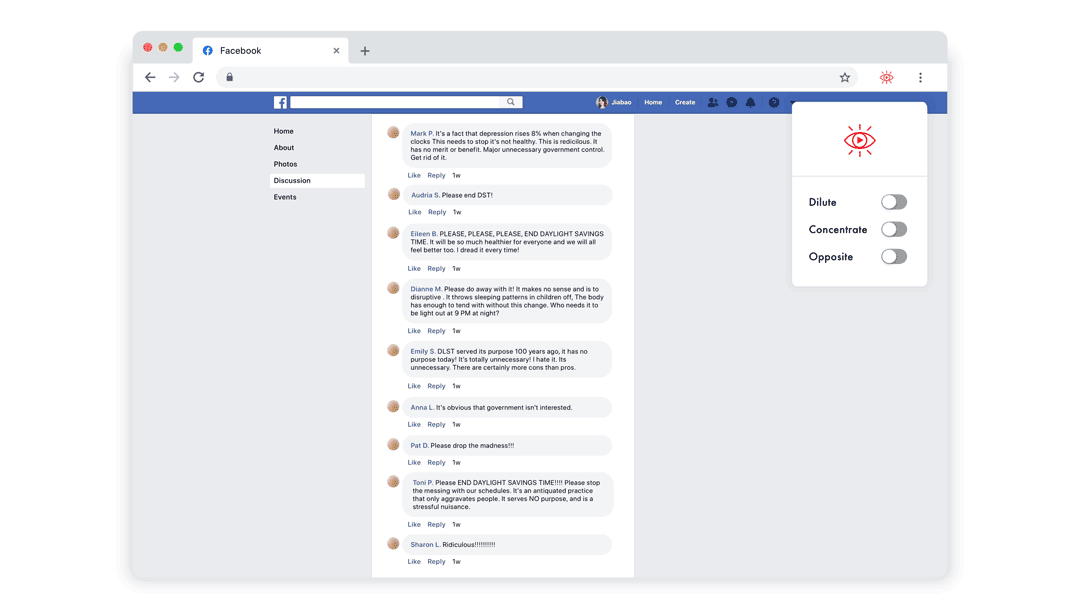Plugin
A web browser plugin to help us notice the things that we would usually ignore
Our perception has become part of the value chain. Our visual field is packed with so much information that our perception has become a commodity with real estate value.
Designs are used to exploit your unconscious biases, algorithms favor content that reaffirms your opinions. So that every little corner of your field of view is being colonized to sell ads.
Like when this little red dot appears in your notifications, it grows and expands. To your mind, it’s huge.
So I created a web browser plug-in to help us notice the things that we would usually ignore.
The plugin reshapes reality directly into the digital media itself.
It shouts out the hidden, filtered voices.
What you should be noticing will now be bigger and vibrant, while everything else will be blurred or monotone.
Like here the story about gender bias emerges from the sea of cats.
It’s a tool to train our perception so we can be more aware of this mediation.
For example, the plugin dilutes things that are being amplified by an algorithm.
Like in this comment section, there are lots of like-minded people shouting the same opinion.
The plug-in makes their comments super small.
Now, the amount of pixel presence they have on the webpage is proportional to the actual value they contribute to the conversation.
The plugin could also show the real estate value of our visual field, and how much of our perception is being commoditized.
Different from ad blockers, for every Ad we see on a webpage, it shows how much money you should be earning.
We’re living in a battlefield between reality and the commercial distributed reality.
So the next version of the plug in could strip away that commercial reality and show you things as they really are.
This plug-in was created with good intentions to train our perceptions and eliminate biases. But the same approach could be used with bad intentions, like forcing citizens to install a plugin like that to control the public narrative.
It’s challenging to make it fair and personal without it becoming just another layer of mediation.
Even though technology is creating these isolations, we could use it to make the world connected again, by breaking the existing model and going beyond it. By exploring how we interface with these technologies, we could step out of our habitual, almost machine-like behaviors, and finally find common ground with each other.
Technology is never neutral. It provides a context and frames a reality. It’s part of the problem and part of the solution. We can use it to uncover our blind spots and retrain our perception, and consequently, choose how we see each other.





